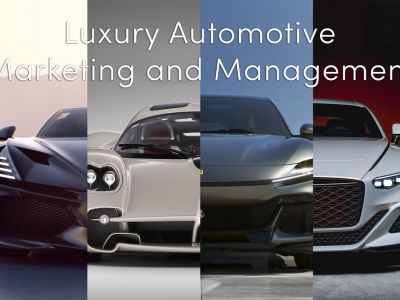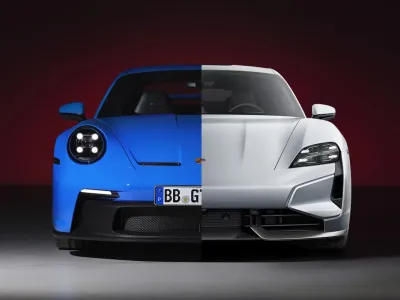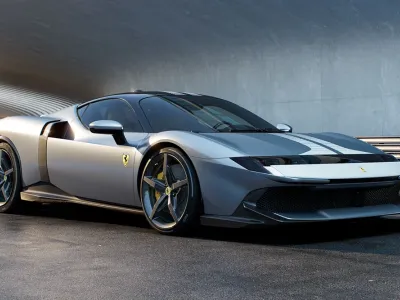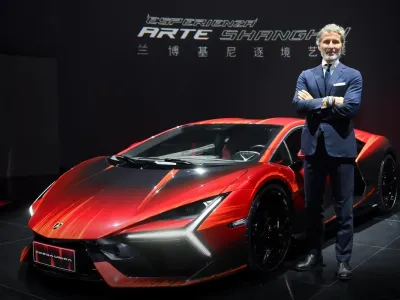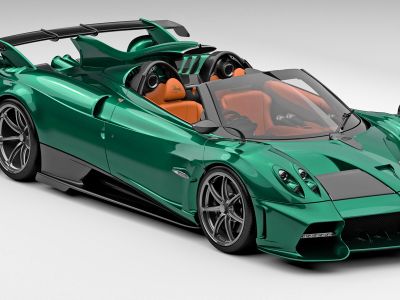Why 2021 was a record year just for Luxury Automotive
2021 just ended and several companies in the luxury space have been publishing news reporting record sales this year. In many sectors, a significant recovery from 2020’s crisis caused by the pandemic was expected, but few foresaw results exceeding or even equalling 2019’s ones. The average predictions claimed that the full recovery up to 2019 levels would be likely reached only by 2023.
It is early to talk about financial results since the complete annual reports will be published in a month or so from now. However, Q3 reports can already tell a lot, and the results indicate two important facts. One is the difference between the top-end of the luxury market and the lower segments. The second is that forecasts should always be considered with extreme care.
Luxury Automotive Revenue Percentage Change by Company (Q3 2019 Vs Q3 2021)

Automotive Revenue Percentage Change by Company (Q3 2019 Vs Q3 2021)

The main reasons for the difficulties of high-volume car manufacturers are the uncertainty brought by the latest wave of the virus that impacted the market especially in the second half of the year, and the ongoing chip shortage that severely affected the supply chain and cars delivery to dealers and clients. The latter is discussed in more detail in Chip Shortage in Luxury Automotive: The Perfect Storm.
In Europe, in fact, over the 12 months of 2021, 11,774,885 vehicles were sold (UNRAE), a decrease of 1.5% over 2020 and 25.5 over 2019. The five major European markets, France, Germany, Italy, Spain, and the UK were mostly stable (with the exception of Germany that despite remaining the largest market lost 10%). The other important piece of data was the continued growth of BEV and PHEV. In France, Germany, Italy, Spain, and UK the increase in sales over 2020 was 64%, 72%, 128%, 66%, and 76% respectively. Even if starting from low numbers, the increase in just one year is quite significant.
5 Major European Market Total and Electrified Vehicles sales (2020-2021)

So, what has made this year so different for luxury automakers?
Record Results
Quite a few companies at the top of the automotive luxury market announced their 2021 sales figures, and almost all were record-breaking. The last has been Rolls-Royce with 5,586 units, a 49% increase over last year. A few days before the British OEM, other announcements came from Bentley which sold 14,659 cars, up 31%, Lamborghini 8,405, +13%, and Porsche 301,915, +11%. Last but not least, Aston Martin also delivered 6,182 vehicles, thanks to a strong contribution of the new SUV DBX, for a total 82% improvement over 2020. While this is not a record result, it is still a strong improvement over 2020, and very close to the all-time high of 6,441 units of 2018.
How the luxury market reached record sales
There are several factors that distinguish the luxury segment from the rest of the automotive industry, most of which, in this case, were crucial to its success in 2021.
Semiconductors availability
Again the production volume plays a role in the resilience of luxury automakers in the current situation. With most of the companies producing in volumes below the 10,000 units, the chip shortage would arguably be more manageable than for companies producing in the hundreds of thousands or even millions of cars.
Additionally, companies that are part of a larger group benefit from the vast resources of their parent companies. Is the case of those under the VW umbrella, or Rolls-Royce with BMW. CEO Torsten Müller-Ötvös told Bloomberg:
“I’m very glad that we are part of the BMW Group. We had preferential delivery of semiconductors last year”
This allowed the company to fulfil every order in the book without delays and actually sustain a strong order book for this year as well.
 *Aston Martin DBX
*Aston Martin DBX
Pandemic Indirect Effects
With regards to the record-breaking sales of Rolls-Royce, the CEO again interviewed, this time by Reuters, suggested that when Covid hit, travel restrictions followed leaving a lot of unspent disposable income. According to him a significant part of it has been spent on luxury goods.
Also, these past two years, surely made private vehicles the preferable choice over public ones for moving and even going on longer trips.
New models and hot segments
Each one of these manufacturers achieved the result thanks to one or two great performers. For low-volume manufacturers a single model can be a true game-changer, impacting the overall results much more than what a single model can do in the high-volume market. SUVs, once again, were key in this context. Aston Martin is a good example. Its DBX, up until Q3 accounted for more than half of the overall sales. Lamborghini is too. In 2021, the Urus sales made up 60% of the total, with the Aventador slowing down again and the Huracán improving for the first time in three years thanks mostly to its new iteration, the STO.
Porsche improved also thanks to the success of its full-electric range. Another important trend, as mentioned in the beginning, is just starting now and it is set to accelerate in the coming years. Taycan and Taycan Cross-Turismo sold extremely well reaching 41,296 units, which made it the third most successful product range for the company, right below the two SUVs Macan and Cayenne, but above Panamera, 911, and 718. Porsche’s competitive advantage in the electric space could become even more important in the next years.
For Rolls-Royce instead, the new Ghost, and the release of its Black Badge version, contributed significantly to the record figure, along with the still successful Cullinan.
 *Rolls-Royce Black Badge Ghost
*Rolls-Royce Black Badge Ghost
A report from IEA claims that in 2021, SUV sales accounted for 45.9% of the total, reaching 35.5 million units globally. Clearly, the top-end luxury segment is still satisfying a strong and increasing demand. As proven by the numbers, most of the recent success and proper turnarounds, of luxury automakers are owed to the extreme popularity of this category, and the relevance of a single successful model in a relatively small product range produced in low volumes.
 *Source: IEA
*Source: IEA
Environmental factors
An important role in the recovery of the luxury market in 2021 has been played by China, whose economy has grown by 8.1% this year, despite the challenges, and exceeding the 6% forecast established by the government.
Interestingly, the country had a major role during the 2008 global financial crisis as well. As the countries that were affected the most gradually recovered, a fast-growing China helped many companies offset the losses in other markets. This dynamic was reflected in the luxury market too of course.
All the automakers that reported great results in 2021 experienced significant growth in China. For some in particular, such as Bentley and Porsche (as visible in the Financials section) the APAC region is already the most important in terms of sales. So, a strong economy, paired with a significant concentration of high-net-worth individuals has been key, positively impacting their performance.
Considering the reports published in Q3, extremely positive results can be expected by the other competitors within the segment.
The factors that played a role last year will arguably continue to influence the market in 2022, but the electric transition will also play an increasingly important role. Like the SUV has helped drive many of these companies’ sales to new heights, the next turning point will likely be the introduction of electric vehicles and the capacity of the OEMs to connect their brand with the new automotive industry and a changing audience.
If you like what you read here and you would like to support me in developing this platform you can do it here:
IF YOU WOULD LIKE TO SUPPORT ME AND THIS WEBSITE’s DEVELOPMENT
